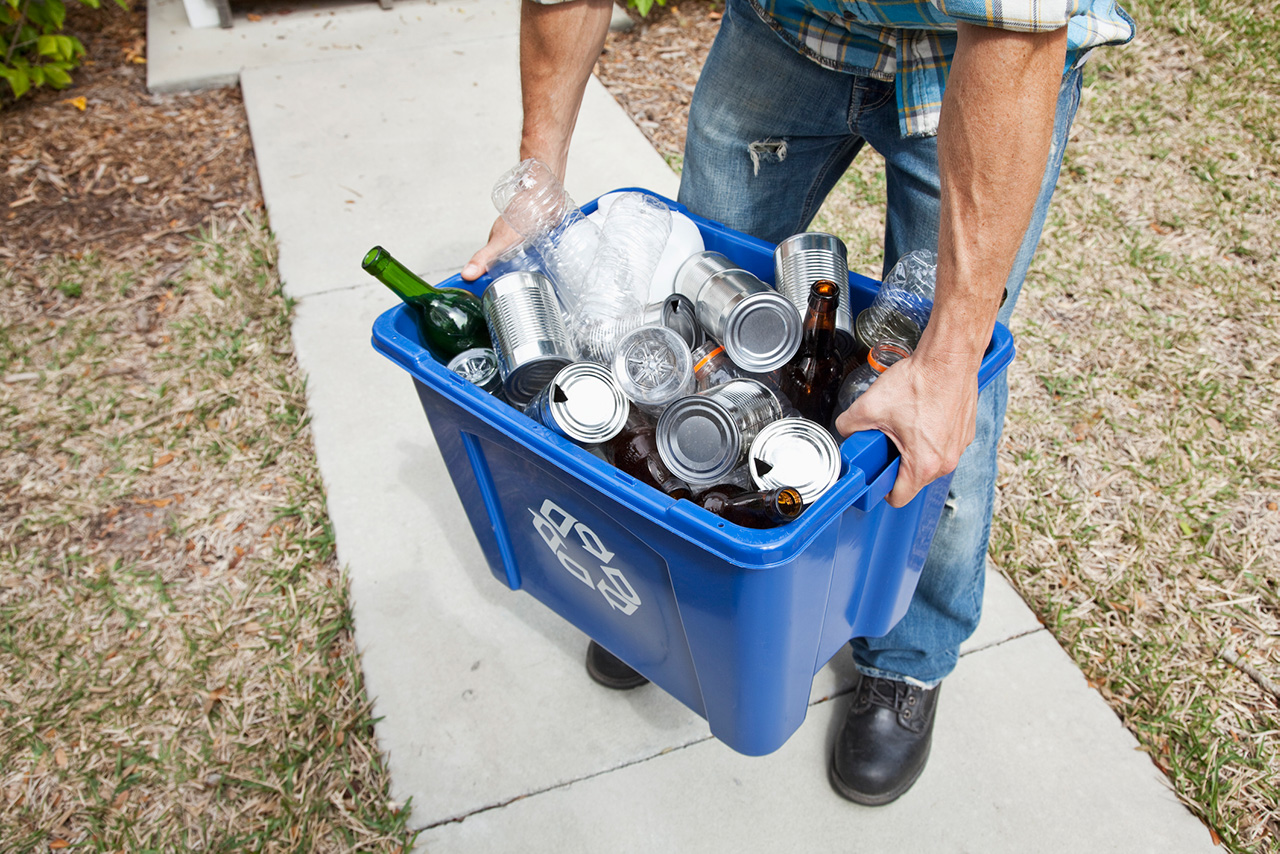The financial pressure of the coronavirus pandemic has led Mayor de Blasio to do what he’s never done before: propose reductions in New York City’s sprawling $93 billion budget. A good place to start would be the city’s recycling collection program. That may seem like eco-sacrilege but in extraordinary times nothing should be sacrosanct. For recycling, the numbers don’t add up.
By sending recyclables to safe landfills — and avoiding the cost of separate collection — the city could save nearly $200 million. At a time when COVID-19 puts frontline workers, including the city’s 7,000 uniformed Sanitation workers (New York’s fabled “Strongest”), at risk and may make staffing more difficult, simplifying garbage collection makes sense — and would save taxpayer dollars.
Conceived originally as a way to save money by selling paper, glass and metal instead of paying to bury it in landfills, recycling in New York — and nationwide — has become a money-loser and a drain on the city’s budget. Nor is there even a guarantee that recyclables will not ultimately go to a landfill anyway.
In a forthcoming paper for the Manhattan Institute, I find that the elimination of recycling — by combining what’s now put out in blue bins with general refuse — would save the city approximately $185 million annually. These are funds that could help restore the youth jobs program and, were they directed to parks, help provide a direct environmental benefit for outdoors-starved New Yorkers.
All this may seem wildly counterintuitive to those with only a general knowledge of waste recycling. Historically, the idea of recycling — which took off at the time of the original Earth Day 50 years ago and became a voluntary option in New York in 1986 — was predicated on its being a win-win: Cities would reduce their waste-disposal costs and materials would be reused, saving energy and lowering producer costs.
That was actually true for many years — so long as China, the chief export destination of US recyclables — needed them and was willing to accept them. But all that changed in 2017, when the Chinese government initiated what it calls Operation National Sword — limiting the import of “foreign garbage.”
It turns out that much of what was sent to China was actually contaminated — think about that greasy cheese residue on your pizza box — and being sent to landfills likely not nearly as safe and sanitary as modern ones in the United States. The market for plastics especially dried up dramatically.
Plastic exports to China dropped a stunning 99 percent — and the prices which US processors were willing to pay cities for such materials fell as well.
New York City’s Sanitation Department today must either pay, or receive very little from, private industry to take recyclables off our hands — even after we spend millions for separate, blue-box pick up. Incredibly, New Yorkers spend an estimated $203.3 million to collect 296,000 tons of paper — for which we received $3.6 million in revenue.
The financial toll when it comes to metal, glass and plastic is much worse per ton. It costs $190.9 million to collect 278,000 tons of such materials — but the city must then pay $79.88 per ton for a private firm to take it all off our hands. That means it costs $213 million to collect and dispose of metal, glass and plastic.
Of course, we’d have to get rid of all this stuff one way or another. And the city likes to compare the cost of paying to dispose of recyclables with that of sending materials to landfills — and claiming financial savings. But this overlooks the crucial cost of sending out special trucks and crews to collect recyclables.
With that in mind, it’s much less expensive to simply combine recyclables with general refuse and send it all to landfills — which, although they may have a bad reputation historically, are now federally regulated and no longer leak into groundwater as some once did.
What’s more, the Independent Budget Office has found that were the city to look to the short-term market for landfill disposal, rather than being tied up in a long-term contract, that disposal option would be much less expensive. Instead, the city is tied up in a 20-year contract premised on the idea that recycling will continue, with materials being delivered to Sims Municipal Recycling, which operates a huge reprocessing plant in Sunset Park. The contract protects the city from paying even higher disposal costs but did not contemplate that it would simply make more sense, environmentally and economically, to halt recycling outright.
It’s important to know that New York is far from alone in dealing with the post-China recycling economics. As one official from Dallas puts it, “If you just looked at the economics of it, it would make more sense to landfill, and that’s true for any city in the country and for that matter any city in the world.”
To be sure, there are many New Yorkers who would simply dislike the idea of sending their recyclables to a landfill, rather than separating them. They’d likely be willing to pay for the possibility that, one way or another, many will be reused, even if the city budget is subsidizing that outcome. But at a time when the city is operating under emergency conditions and must look to budget savings, this is the time to cut back on what amounts to a feel-good service.
This piece originally appeared at the New York Post
______________________
Howard Husock is a senior fellow at the Manhattan Institute, where he directs the Tocqueville Project, and author of the new book, Who Killed Civil Society?
This piece originally appeared in New York Post
